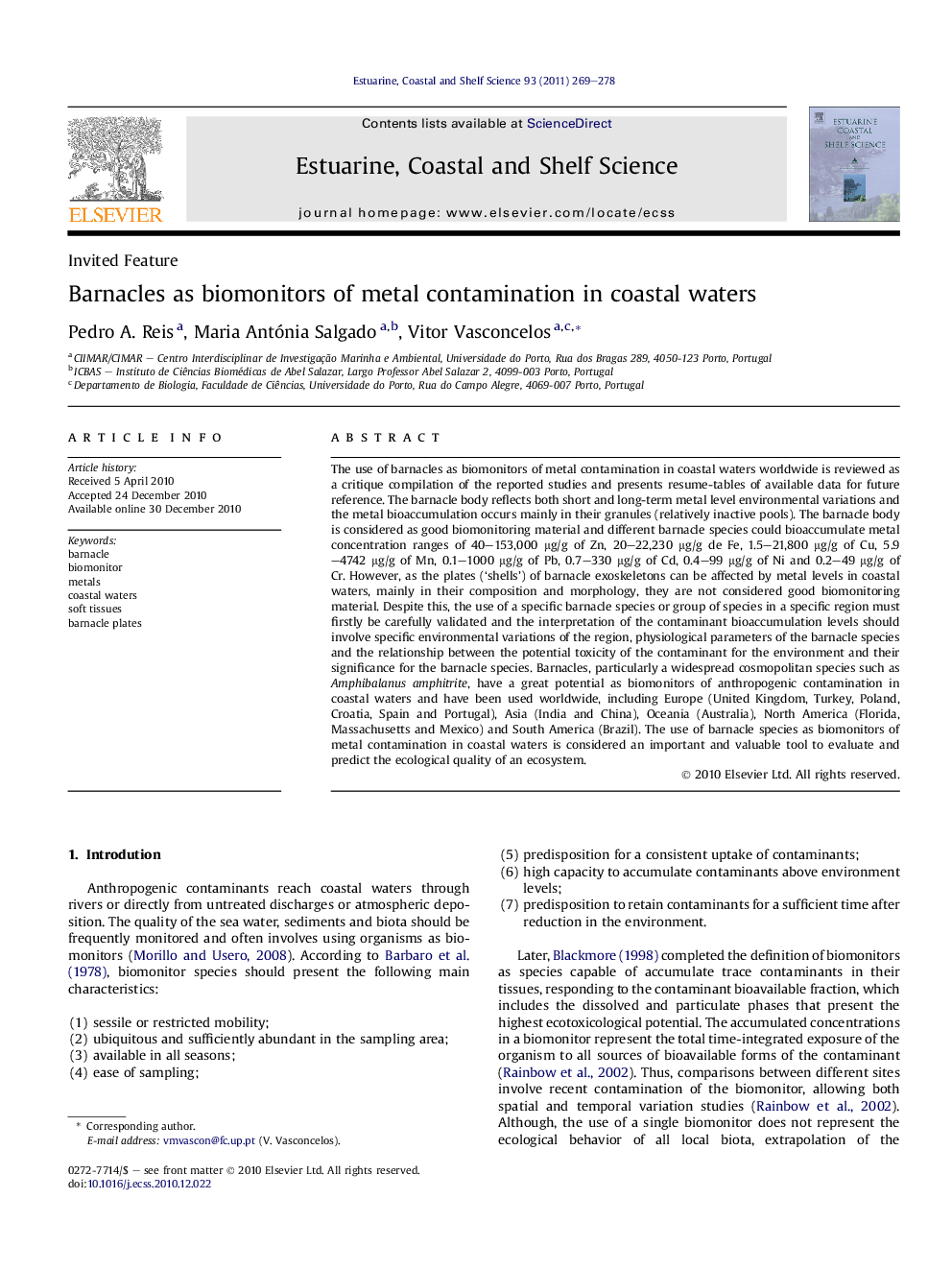| کد مقاله | کد نشریه | سال انتشار | مقاله انگلیسی | نسخه تمام متن |
|---|---|---|---|---|
| 4540400 | 1326667 | 2011 | 10 صفحه PDF | دانلود رایگان |

The use of barnacles as biomonitors of metal contamination in coastal waters worldwide is reviewed as a critique compilation of the reported studies and presents resume-tables of available data for future reference. The barnacle body reflects both short and long-term metal level environmental variations and the metal bioaccumulation occurs mainly in their granules (relatively inactive pools). The barnacle body is considered as good biomonitoring material and different barnacle species could bioaccumulate metal concentration ranges of 40–153,000 μg/g of Zn, 20–22,230 μg/g de Fe, 1.5–21,800 μg/g of Cu, 5.9–4742 μg/g of Mn, 0.1–1000 μg/g of Pb, 0.7–330 μg/g of Cd, 0.4–99 μg/g of Ni and 0.2–49 μg/g of Cr. However, as the plates (‘shells’) of barnacle exoskeletons can be affected by metal levels in coastal waters, mainly in their composition and morphology, they are not considered good biomonitoring material. Despite this, the use of a specific barnacle species or group of species in a specific region must firstly be carefully validated and the interpretation of the contaminant bioaccumulation levels should involve specific environmental variations of the region, physiological parameters of the barnacle species and the relationship between the potential toxicity of the contaminant for the environment and their significance for the barnacle species. Barnacles, particularly a widespread cosmopolitan species such as Amphibalanus amphitrite, have a great potential as biomonitors of anthropogenic contamination in coastal waters and have been used worldwide, including Europe (United Kingdom, Turkey, Poland, Croatia, Spain and Portugal), Asia (India and China), Oceania (Australia), North America (Florida, Massachusetts and Mexico) and South America (Brazil). The use of barnacle species as biomonitors of metal contamination in coastal waters is considered an important and valuable tool to evaluate and predict the ecological quality of an ecosystem.
Figure optionsDownload high-quality image (57 K)Download as PowerPoint slideHighlights
► We report the use of barnacles as biomonitors of metal contamination in coastal waters.
► Barnacle shells are not considered a good biomonitoring material.
► Amphibalanus amphitrite has a great potential as a biomonitor of anthropogenic contamination in coastal waters.
► Barnacle species may be a useful tool to evaluate and predict the ecological quality of an ecosystem.
Journal: Estuarine, Coastal and Shelf Science - Volume 93, Issue 4, 20 July 2011, Pages 269–278